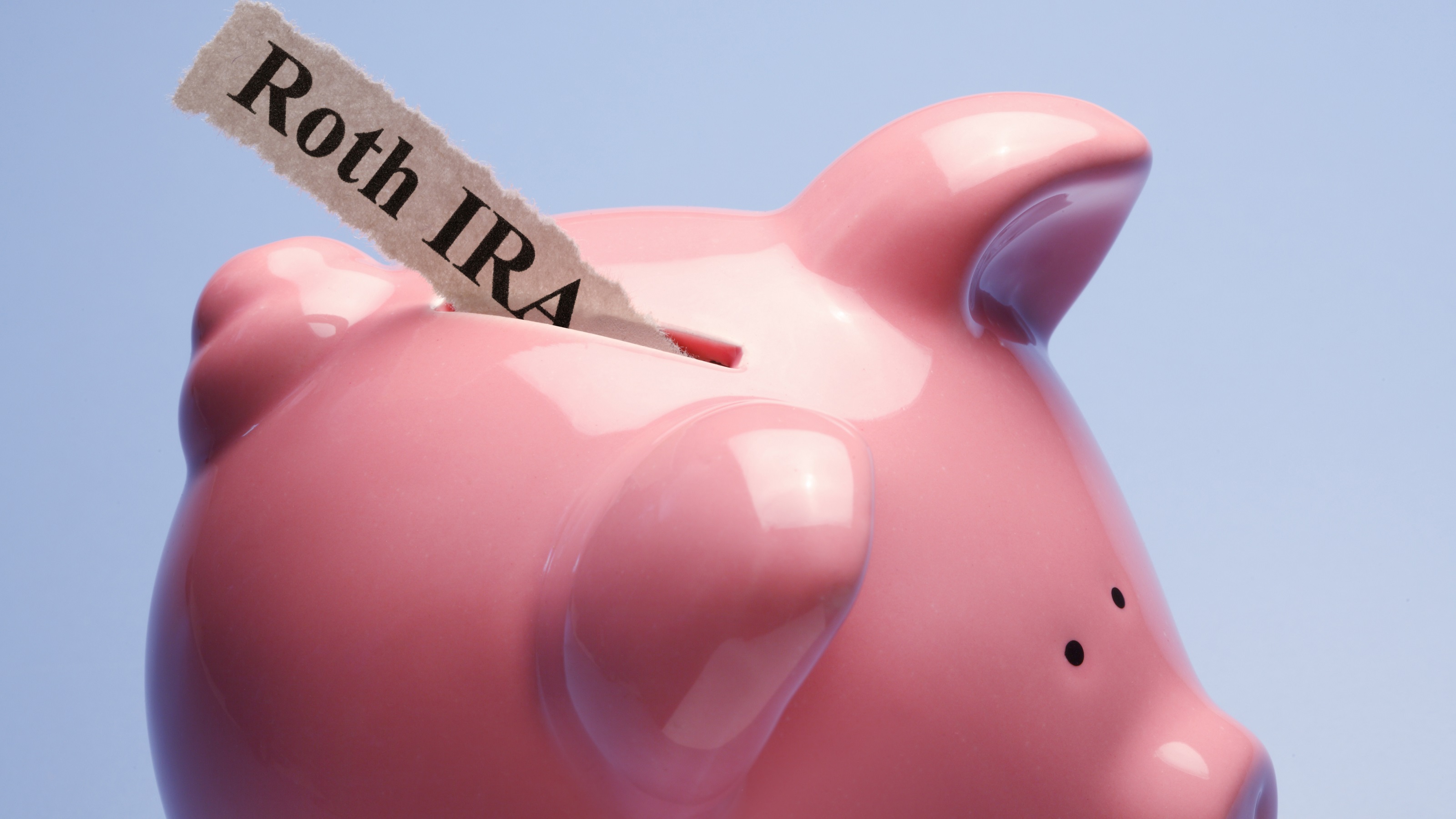Weighing a Roth Conversion? Don’t Overlook These Five Factors
Conversions to Roth IRAs can have wide-ranging consequences on your finances, so look at the big picture before you make your move.


Most investors understand that they need diversification in their portfolios. As a result, they are fairly good about settling on a mix of aggressive, moderate-risk and low-risk investments.
But one area people often fail to account for — especially when saving for retirement — is diversification of the tax status of their assets. Take a look at the retirement accounts of many Americans, and you will likely see they are heavily weighted toward IRA, 401(k), 457 and 403(b) accounts. People rely on that savings for their retirement income, along with Social Security and perhaps a pension.
All of those retirement income sources have something in common, though: They are taxable.
From just $107.88 $24.99 for Kiplinger Personal Finance
Become a smarter, better informed investor. Subscribe from just $107.88 $24.99, plus get up to 4 Special Issues

Sign up for Kiplinger’s Free Newsletters
Profit and prosper with the best of expert advice on investing, taxes, retirement, personal finance and more - straight to your e-mail.
Profit and prosper with the best of expert advice - straight to your e-mail.
Think about that for a moment. We wisely hedge our market risks by diversifying, but we fail to hedge against the notion that based on the Tax Cuts and Jobs Act of 2017, taxes will likely go up sometime in the future and that our tax rate may be higher in retirement than it is today.
Of course, one astute way to mitigate that tax risk is to convert pre-tax dollars to tax-free dollars. And a popular strategy for doing that is to convert a tax-deferred account to a Roth IRA. Unlike with a traditional IRA or other tax-deferred account, you don’t pay taxes when you make a withdrawal from your Roth account because it’s not considered taxable income (provided you follow the Roth IRA distribution rules).
Yes, you do pay taxes when you make the conversion, but that’s at today’s tax rates, not future rates. Also, if you follow the IRS rules regarding distributions, a Roth grows tax-free.
Although a Roth conversion can be an effective tax planning strategy, there are a few things to keep in mind as you weigh whether to take the plunge and decide how much money you should convert in a given year. Those include:
1. Roth conversions and the cost of Medicare Part B premiums
You’ve likely heard that too much of a good thing can be a bad thing. That sometimes applies to a Roth conversion. If you are at an age where you are anticipating signing up for Medicare — or you are already there — you need to be cautious about how much of your retirement savings you convert to a Roth in a given year. This is because the cost of your Medicare Part B premium is determined based on your modified adjusted gross income from two years prior.
The standard monthly premium in 2023 for Medicare Part B is $164.90, which applies to individuals making $97,000 or less and married couples filing jointly making $194,000 or less. As income goes up, so do those monthly premiums. In all, there are six levels of premiums, with the highest being $560.50 a month.
Additionally, you should consider that these numbers may change year to year. For example, in 2024, the Medicare Part B premiums will be $174.70, an increase of $9.80 (this applies to individuals making less than $103,000 or married couples earning less than $206,000). If you are wondering what the highest premium will be in 2024, it is $594, an increase of $33.50!
So, when you look at the net benefit of a Roth conversion, you need to consider all the costs related to the conversion. How much will the conversion raise your taxable income for the year, and will that bump you into a higher Medicare Part B premium over the next two years?
2. How Roth conversions can affect Social Security and taxes
Yes, your Social Security benefits can be taxed. In fact, up to as much as 85% of your Social Security benefit is potentially taxable. Your provisional income is what determines whether and how much of your Social Security is taxed. Provisional income is the total of half of your Social Security benefit, plus your tax-exempt interest, plus the other sources of taxable income that make up your adjusted gross income, including pensions, wages and dividends. If your provisional income is:
- Under $25,000 (for singles) or $32,000 (married couples filing jointly), you pay no federal income taxes on Social Security
- From $25,000-$34,000 (for singles) or $32,000 to $44,000 (married couples), up to 50% of your benefits may be taxable
- Above those income limits, up to 85% of your Social Security benefits may be taxable
So, if you are already drawing Social Security, a Roth conversion could increase your income enough to have an impact. This is one reason why it’s beneficial to begin making those Roth conversions when you are younger, before you are drawing Social Security.
3. Roth contribution limits
The government doesn’t let you put an unlimited amount in a Roth each year and, in some cases, doesn’t let you contribute to a Roth at all. For 2023, the maximum contribution to a Roth IRA is $6,500 annually if you are younger than 50. Those 50 and older can contribute an extra $1,000, for a total of $7,500.
Also, income limits apply. To contribute the maximum, your adjusted gross income can’t exceed $138,000 if you are single, or $218,000 if you are married filing jointly. Beyond that, the amount you can contribute begins to be phased out, and you can’t contribute anything if you are single and your income is $153,000 or more, or married filing jointly with an income of $228,000 or more.
One thing to remember, though, is that while those with high incomes can’t contribute directly to a Roth IRA, there are no income restrictions on Roth conversions.
4. Withdrawal restrictions for Roths
It’s important to know that there are stipulations for accessing the money in your Roth tax-free. You can withdraw the contributions you make to a Roth IRA at any time, whatever your age, without owing taxes or a 10% early-withdrawal penalty. But to withdraw any earnings tax-free and penalty-free, you must be at least 59½, and you must have waited at least five years after opening a new Roth account.
For those making Roth conversions, you must wait five years after the conversion or until you are at least 59½ before you can withdraw the converted amount without paying the 10% penalty. Earnings on conversions are tax-free and penalty-free as long as the owner is 59½ and has had the money in the Roth IRA for at least five years.
Other Roth benefits: RMDs and a tax-free legacy
With tax-deferred accounts, such as traditional IRAs, 457s, 403(b)s or 401(k)s, you must start withdrawing a certain percentage when you reach age 72 (or 73 if you reach age 72 after Dec. 31, 2022), whether you want to or not. This is called a required minimum distribution, or RMD, and it is fully taxable. But there is no RMD for a Roth. You can leave the money untouched as long as you like if other income is taking care of your needs. Also, an additional benefit is that you can pass the Roth account to your family after you die, tax-free.
Clearly, there are plenty of reasons to consider a Roth conversion in your personal plan, but as you can see, how well it will work for you depends on variables such as your income, other assets and your goals. Your financial professional or tax planner can give you guidance on how to responsibly approach a conversion for your specific situation — and get some tax diversification in the process.
Information provided should not be considered as tax advice from GWN Securities, Inc. or its representatives. Please consult with your tax professional.
Ronnie Blair contributed to this article.
The appearances in Kiplinger were obtained through a public relations program. The columnist received assistance from a public relations firm in preparing this piece for submission to Kiplinger.com. Kiplinger was not compensated in any way.
related content
- Benefits of Doing Roth IRA Conversions Early in Retirement
- Roth IRA Conversions: Benefits and Considerations Beyond Taxes
- Considering a Roth IRA Conversion? Six Reasons It Makes Sense
- Are Roth IRAs Really as Great as They’re Cracked Up to Be?
- Are You Ready to ‘Rothify’ Your Retirement?
Profit and prosper with the best of Kiplinger's advice on investing, taxes, retirement, personal finance and much more. Delivered daily. Enter your email in the box and click Sign Me Up.

Daniel Rey is the founder and CEO of Central Florida-based Voyage Retirement Solutions. Daniel developed the Retirement Navigator, a proprietary planning process designed to help Voyage's clientele achieve their long-term financial goals. He is passionate about helping investors, from public pensions and other employee retirement benefit plans to individual retirement planning.
-
 Holiday Tax Scams: 'Tis the Season to be Wary
Holiday Tax Scams: 'Tis the Season to be WaryTax Scams Navigating tax tricks of the holiday season may be daunting, but don't let that destroy your festive spirit
-
 Metro by T-Mobile Is Giving Away This Samsung Galaxy A16: Which Plans Are Eligible?
Metro by T-Mobile Is Giving Away This Samsung Galaxy A16: Which Plans Are Eligible?Metro by T-Mobile is offering free Samsung Galaxy A16 phones on eligible plans right now. Here’s how the deal works.
-
 I Drive and Collect Classic Cars: Here’s How I Got Started
I Drive and Collect Classic Cars: Here’s How I Got StartedAre classic cars a hobby or an investment strategy — or both? Either way, the vintage car scene is much cooler and more affordable than you think.
-
 The $183,000 RMD Shock: Why Roth Conversions in Your 70s Can Be Risky
The $183,000 RMD Shock: Why Roth Conversions in Your 70s Can Be RiskyConverting retirement funds to a Roth is a smart strategy for many, but the older you are, the less time you have to recover the tax bite from the conversion.
-
 A Financial Pro Breaks Retirement Planning Into 5 Manageable Pieces
A Financial Pro Breaks Retirement Planning Into 5 Manageable PiecesThis retirement plan focuses on five key areas — income generation, tax management, asset withdrawals, planning for big expenses and health care, and legacy.
-
 4 Financial To-Dos to Finish 2025 Strong and Start 2026 on Solid Ground
4 Financial To-Dos to Finish 2025 Strong and Start 2026 on Solid GroundDon't overlook these important year-end check-ins. Missed opportunities and avoidable mistakes could end up costing you if you're not paying attention.
-
 Are You Putting Yourself Last? The Cost Could Be Your Retirement Security
Are You Putting Yourself Last? The Cost Could Be Your Retirement SecurityIf you're part of the sandwich generation, it's critical that you don't let the needs of your aging parents come at the expense of your future.
-
 I'm an Insurance Pro: It's Time to Prepare for Natural Disasters Like They Could Happen to You
I'm an Insurance Pro: It's Time to Prepare for Natural Disasters Like They Could Happen to YouYou can no longer have the mindset that "that won't happen here." Because it absolutely could. As we head into 2026, consider making a disaster plan.
-
 The Future of Philanthropy Is Female: How Women Will Lead a New Era in Charitable Giving
The Future of Philanthropy Is Female: How Women Will Lead a New Era in Charitable GivingWomen will soon be in charge of trillions in charitable capital, through divorce, inheritance and their own investments. Here's how to use your share for good.
-
 5 Smart Things to Do With Your Year-End Bonus, From a Financial Professional
5 Smart Things to Do With Your Year-End Bonus, From a Financial ProfessionalAfter you indulge your urge to splurge on a treat, consider doing adult things with the extra cash, like paying down debt, but also setting up a "fun fund."
-
 Are You a Gen X Investor? Here's How You Can Protect Your Portfolio From an AI Bubble
Are You a Gen X Investor? Here's How You Can Protect Your Portfolio From an AI BubbleAmid talk of an AI bubble, what's the best course of action for investors in their 50s and 60s, whose retirement savings are at risk from major market declines?